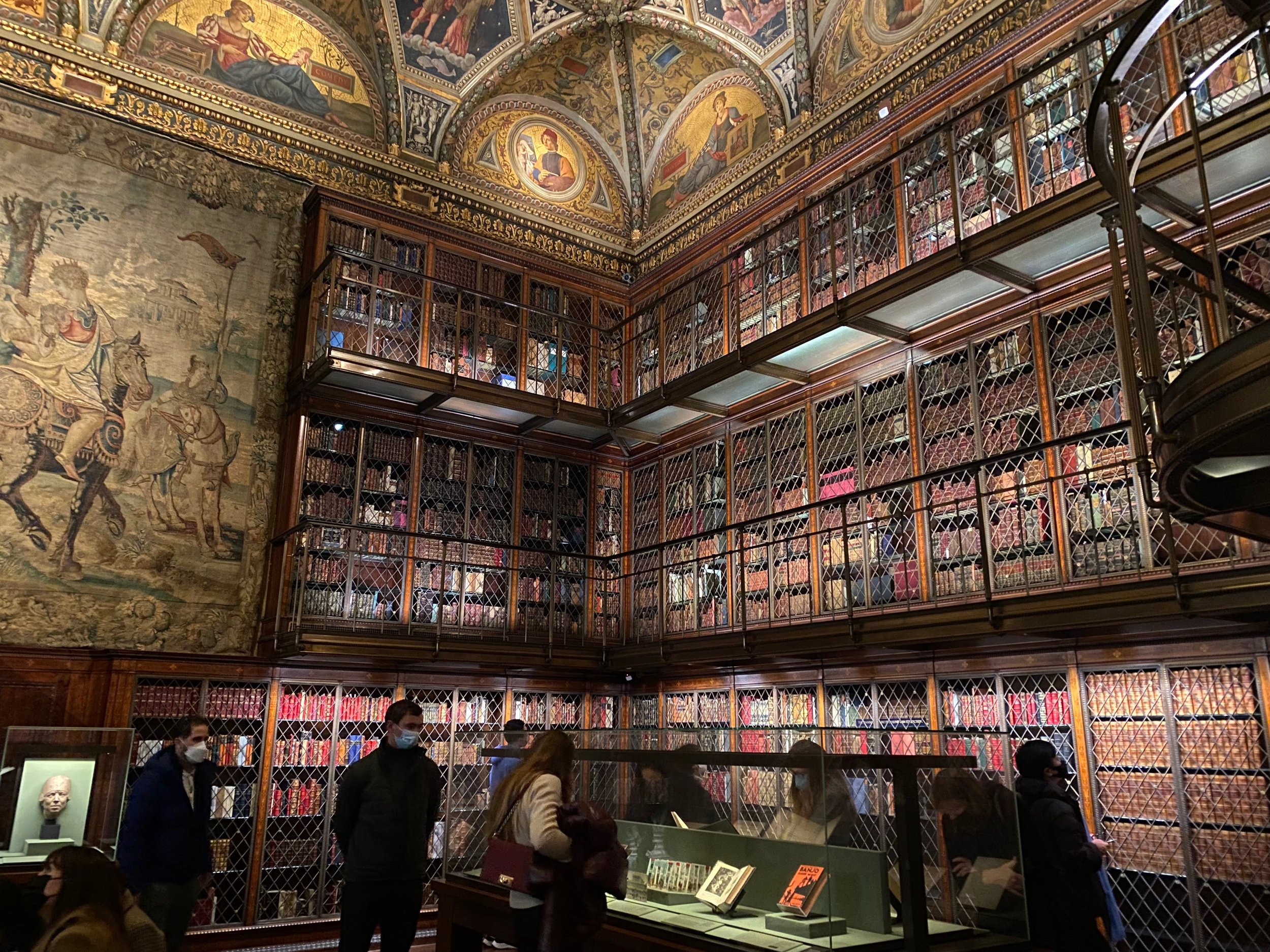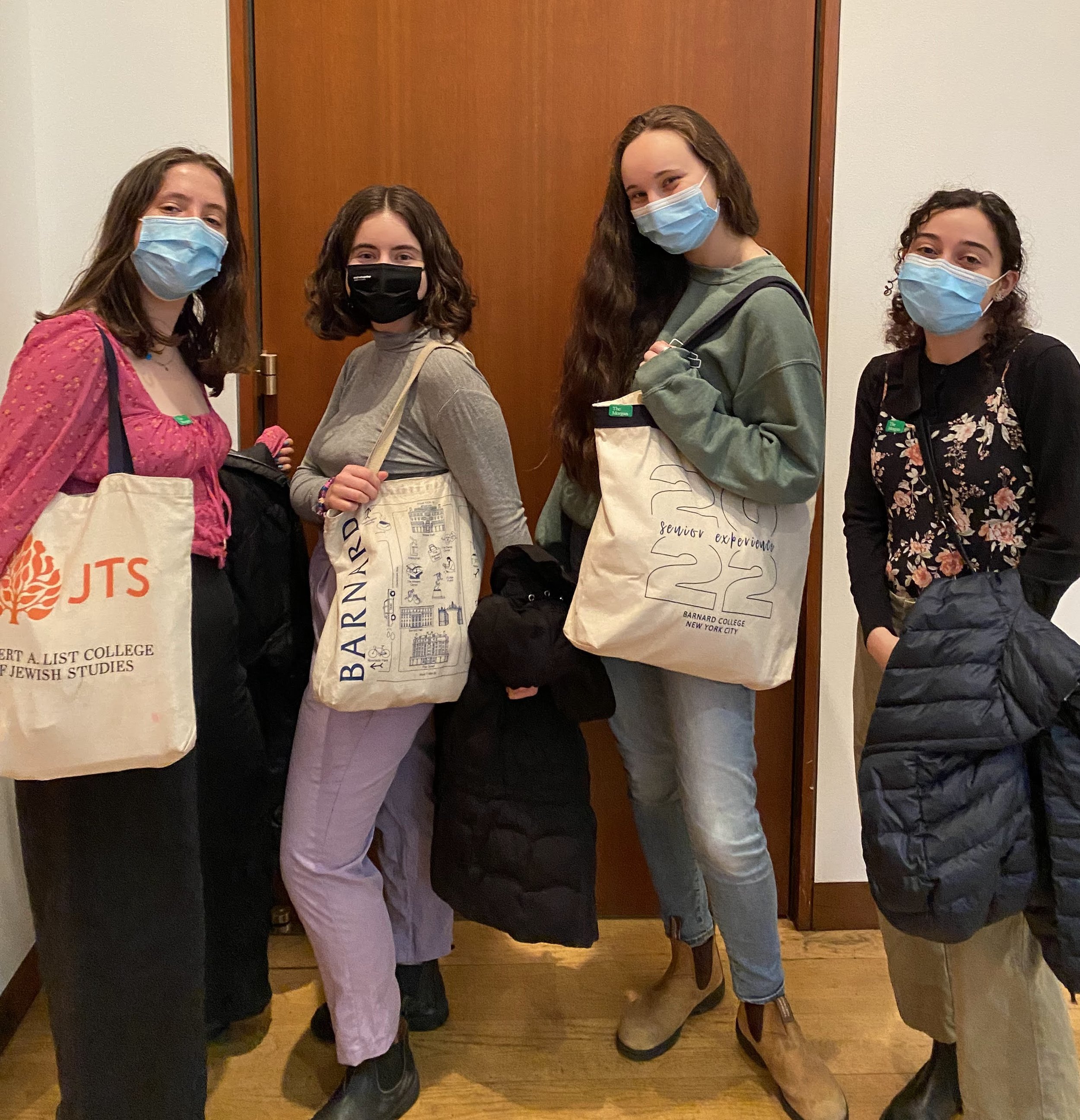Explore NYC: The Morgan Museum
Located right in the heart of Midtown Manhattan, the Morgan Museum and Library was once the home of financier and banker John Piermont Morgan, better known today as JP Morgan. Morgan was an avid collector of art and particularly books, and in the early 1900s, built a library adjacent to his home to store his massive collection. After Morgan’s death, his home and library were transformed into a museum, open to the public. Today, the Morgan Museum is one of NYC’s hidden gems, a rich collection of art and books spanning centuries, housed in a beautiful Baroque library alongside a modern museum space.
Even though I have lived right outside New York City for most of my life, I only found out about the Morgan from some friends at Barnard. This spring, me and some of my friends from the Barnard/JTS Double Degree program booked (free) tickets to the Morgan, and spent a few hours browsing the museum’s massive collection.
From left to right: My friends Talia, Eliana, Arin, Naomi, and me!
When we visited, the Morgan had exhibits on the poet Gwendolyn Brooks, painter Hans Holbein (of SIX: the Musical fame), and singer Woody Guthrie. The exhibit on Brooks included copies of her books, letters to Brooks, artistic renditions of her poems, and art related to Brooks’ work from other Black artists and the community that sprung up around Brooks’ writing.
An excerpt from one of Brooks’ poems, “Paul Robeson,” celebrating the Black singer, activist, and actor Paul Robeson.
Though it was a small exhibit, it was really moving to see how Brooks’ poetry influenced her peers, students, and followers. Moving on to the Holbein exhibit took us from the twentieth century African-American arts scene to the world of sixteenth century European nobility, particularly the court of King Henry VIII of England.
Talia repping Barnard while appreciating Holbein’s art
Hans Holbein the Younger was a painter from Bavaria, who worked in Switzerland as a young artist. While there, he painted several iconic paintings of the Dutch Catholic philosopher and theologian, Erasmus of Rotterdam. Later, he was appointed court painter for King Henry VIII, painting the king, his advisors, other artists, and many of the noblemen and women around the court. Famously, Holbein's painting of Anne of Cleves, Henry VIII’s fourth wife, led Henry to marry Anne, only for him to annul the marriage when he met her in real life and grant her a lavish estate and income, making her probably the most fortunate of his ex-wives. Having seen SIX twice in London, I was excited to see “the Haus of Holbein” and their work at the Morgan, and enjoyed getting to see his work up close.
Holbein’s sketch of William Parr, brother of Catherine Parr, Henry’s sixth wife.
The next exhibit was on Woody Guthrie, the American folk singer, which brought us back to twentieth century America. The exhibit included many artifacts from Guthrie’s life, including guitars, notebooks, and handwritten lyrics of some of his most famous songs, including “This Land is Your Land.” The exhibit highlighted Guthrie’s childhood in Dust Bowl-ravaged Oklahoma, his activism, his commitment to American pluralism and diversity, his criticism of wealth inequality in America, and the work of many of the artists he inspired, such as Ani Difranco. He wrote “This Land” while living in Midtown New York, just a few blocks away from the Morgan.
This guitar belongs to bisexual singer Ani DiFranco, often referred to as of “Woody’s Children.”
Next, we headed into the Morgan’s main exhibit, located in the ornately decorated Baroque library. The East Room’s ceiling, shelves, and tapestries are stunningly beautiful, soaring three stories up above the exhibit floor.
The Morgan’s East Room
Among the many books on the library’s shelves were original, serialized copies of Bleak House, which I was reading for a class at the time. Morgan also collected Bibles in many different languages, including Gaelige (Irish), Sanskrit, and more. Among the most famous items in the Morgan collection are its Bibles, which include a medieval illustrated Bible manuscript from France and three copies of the original Gutenberg Bible, the first book to be printed in Europe.
One of the Morgan’s Gutenberg Bibles.
We finished up our Morgan tour after a few hours touring around the museum. The Morgan is constantly refreshing its exhibits, and so if you visit, you may have a totally different experience than we did. New York City is full of museums big and small, covering all sorts of history, arts, culture, and more, and they often offer discounted or free tickets to Barnard students. During my time here, I’ve explored many of New York’s museums, including the Morgan, the Met, the Met Cloisters, the Whitney, MoMA, the Guggenheim, the American Jewish Historical Society, which are only a small fraction of the museums and exhibits NYC has to offer. Check out these other blog posts to learn more about life and learning as a Barnard student in NYC!








